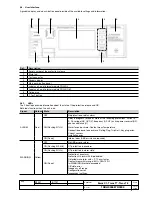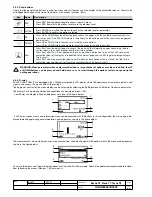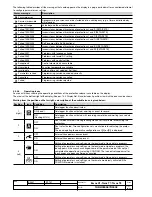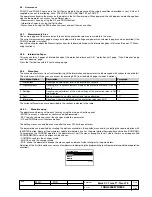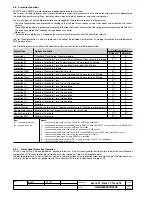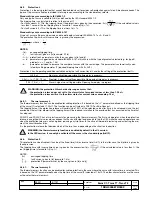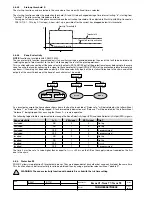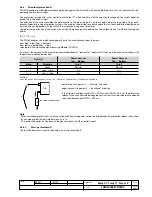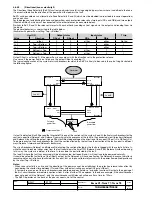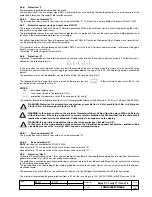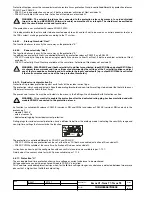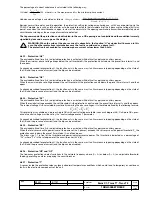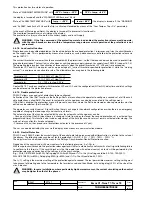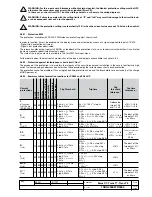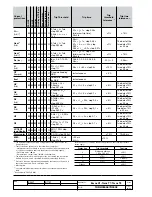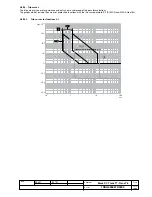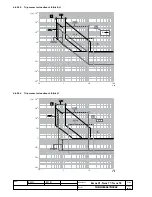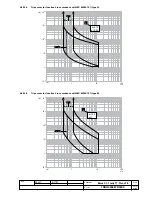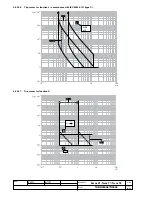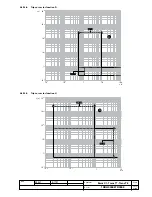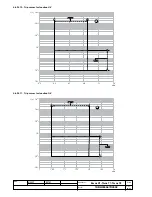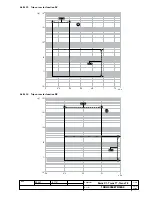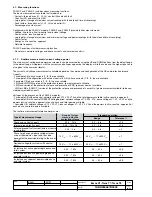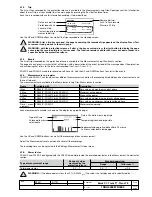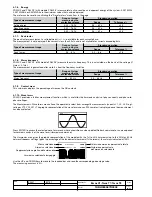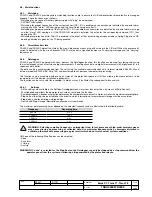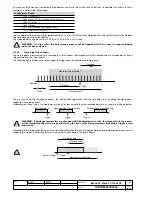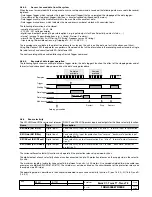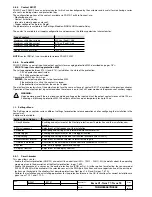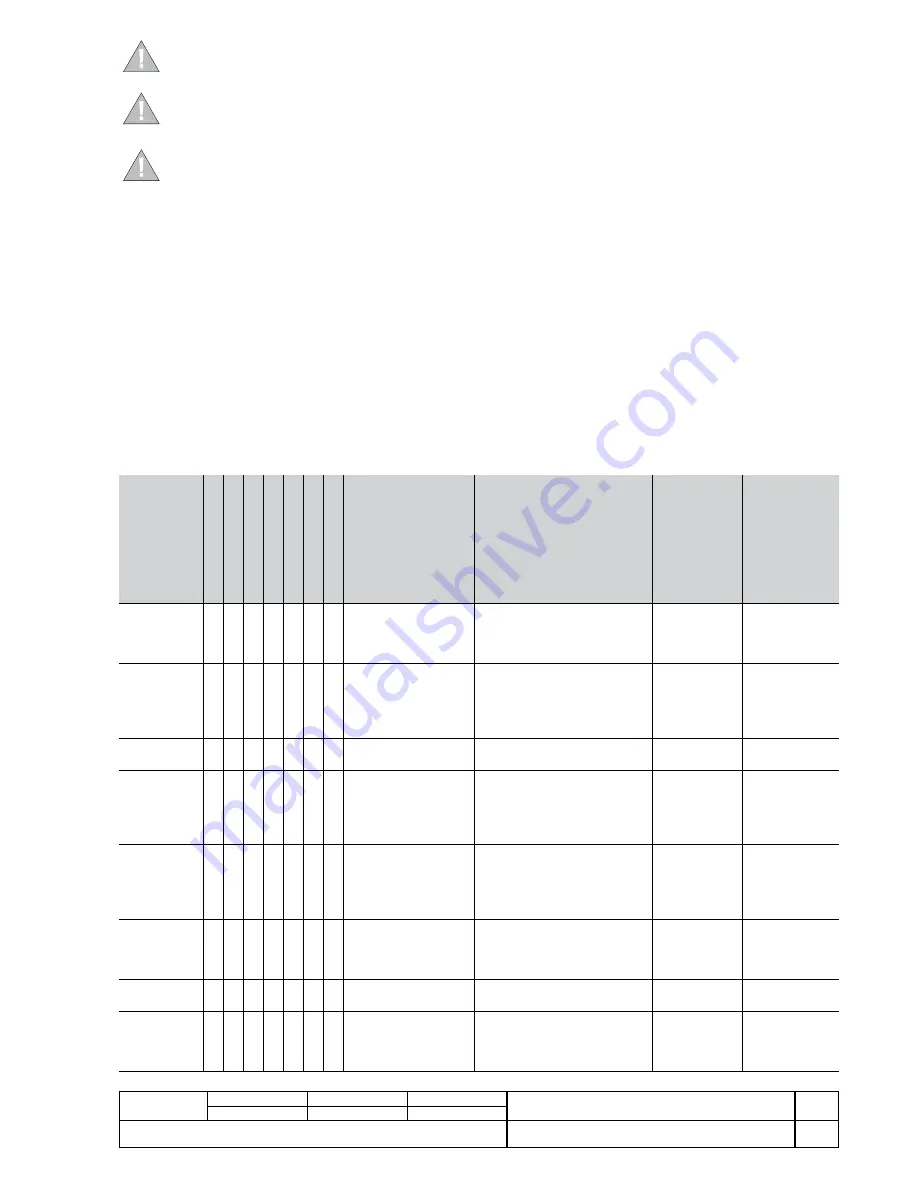
B0431
Emax X1-Tmax T7-Tmax T8
37/66
Doc N°
Mod.
Apparatus
Scale
Page No
1SDH000587R0002
WARNING: For three-pole circuit-breakers without external neutral, the Neutral protection setting must be OFF,
otherwise the sensor presence error will be signalled (Error CS).
In these cases, short-circuit T5-T6 on the sliding contacts, as shown in the wiring diagrams.
WARNING: Failure to comply with the setting limits of “I1” and “InN” may result in damage to the circuit-break-
er and consequent risks even for the operator.
WARNING: the protection setting is automatically 100% when the current value exceeds 15.5xIn on the neutral.
3.6.21. Protection MM
The protection, available with PR332/P MM releases, protects against short-circuit.
In order to function, it must be enabled via the display menu and activated by means of a signal supplied to inputs K14/K15:
- Signal High: protection activated;
- Signal Low: protection deactivated.
The release handles output contacts 95S/98s as feedback of the protection state, so as to communicate whether it is activated
(contacts closed) or deactivated (contacts open).
The state of the input contacts is available in the Test-MM Test-Input menu.
Further details about the electrical characteristics of the inputs and outputs are available in chapter 3.8.4.
3.6.22. Protection against instantaneous short-circuit “Iinst”
The purpose of this protection is to maintain the integrity of the circuit-breaker and installation in the case of particularly high
current values requiring shorter reaction times than those provided by the instantaneous short-circuit-protection.
The protection cannot be disabled. It has a single fixed time protection curve and the threshold level is exclusively at the charge
of ABB personnel.
3.6.23. Summary table of protection functions for PR332 and PR333/P
Current
protections
PR332/P
PR333/P
Disabling
Disabling of TRIP only
Zone selectivity
Start-up thr
eshold
Thermal memory
Trip Threshold
Trip time
Trip
threshold
tolerance
(2)
Trip time
tolerance
(2)
L
all curves:
t=k/I2 and
IEC 60255-3
0,4xIn
≤
I
1
≤
1xIn
step 0,01xIn
3s
≤
t
1
≤
144s
(1)
, step 3s
@I
f
=3I
1
Releasebe-
tween 1,05
and 1,2 xI1
±10%, I
f
≤
6In
±20%, I
f
->
6In
S
(t=k)
0,6xIn
≤
I
2
≤
10xIn
step 0,1xIn
0,6xIn
≤
I
2 start-up
≤
10xIn
step 0,1xIn
I
f
>I2
0,05s
≤
t
2
≤
0,8s, step 0,01s
0,10s
≤
t
2 start-up
≤
30s, step
0,01s
0,04s
≤
t
2 sel
≤
0,2s, step 0,01s
±7%, I
f
≤
6In
±10%, I
f
> 6In
The best of the
two data±10%
or 40ms
S
(t=k/I
2
)
0,6xIn
≤
I
2
≤
10xIn
step 0,1xIn
0,05s
≤
t
2
≤
0,8s,
step 0,01 s @I
f
=10In
±7%, I
f
≤
6In
±10%, I
f
> 6In
±15%, I
f
≤
6In
±20%, I
f
->
6In
S2
(t=k)
0,6xIn
≤
I
2
≤
10xIn
step 0,1xIn
@I
f
>I
2
0,05s
≤
t
2
≤
0,8s, step 0,01s
0,10s
≤
t
2 start-up
≤
30s, step
0,01s
0,04s
≤
t
2 sel
≤
0,4s, step 0,05s
±7%, I
f
≤
6In
±10%, I
f
> 6In
The best of the two
data
±10% or
40ms
D
(t=k)
0,6xIn
≤
I
7
≤
10xIn
step 0,1xIn
@I
f
>I
7
0,20s
≤
t
7
≤
0,8s, step 0,01s
0,10s
≤
t
7 start-up
≤
30s, step
0,01s
0,13s
≤
t
7 sel
≤
0,5s, step 0,01s
±10%
The best of the
two data±10%
or 40ms
I
(t=k)
1,5xIn
≤
I
3
≤
15xIn
step 0,1xIn
1,5xIn
≤
I
3 Start-Up
≤
15x In
≤
30 ms
0,1s
≤
t
3 start-up
≤
30s, step
0,01s
@ I
f
>I
3
±10%
MCR
(t=k)
6,0xIn
≤
I
5
≤
15xIn
step 0,1xIn
@I
f
>I
5
≤
30ms
(3)
±10%
G
(4) (6)
(t=k)
0,1xIn
≤
I
4
≤
1xIn
step 0,02xIn
0,1s
≤
t
4
≤-
1s, step 0,05 s
0,1s
≤-
t
4 start-up
≤
1s, step 0,02s
0,04s
≤
t
4 sel
≤
0,2s, step 0,01s
@ I
f
>I
4
±7%
The best of the
two data±10%
or 40ms
B1751

